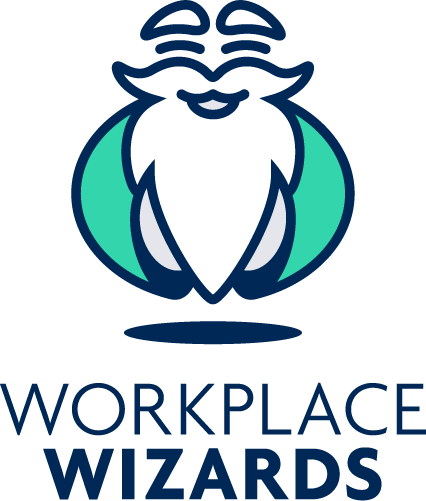Employers encouraging staff to take up flexible work practices was certainly the hot topic of 2016. Indeed, given most of the current commentary it is almost heretical to suggest flexible work practices might be a bad thing.
However, could it be? Recent developments show employee flexibility options can significantly increase the risk and costs for business. Have managers spouting the current flexibility diktat done a rigorous cost benefit analysis of whether employee flexibility makes sense for their organisation? Have they costed and calculated the pros and cons, or has the bandwagon been jumped on owing to the current ‘vibe’ of management and HR thinking, or even because it’s something they should be seen to be supporting?
Managers and business owners should know that under Victorian and Commonwealth legislation, an injury will be covered by workers’ compensation if it arises out of, or in the course of, employment. The difficult question for employers is: “what does ‘in the course of employment’ mean?” when employees are working away from the office location, and where does potential liability end.
In Garrett and Comcare (Compensation) [2015] AATA 801 (“Garrett”) the Administrative Appeals Tribunal (“AAT”) held an injury occurred “in the course of employment” because it occurred at the place the employer “encouraged” the employee to be during personal activities, in an interlude between work tasks. The AAT’s later decision in Demasi and Comcare (Compensation) [2016] AATA 644 (“Demasi”) helpfully clarifies the Garrett decision, but indicated the responsibility of employers may extend to any injuries occurring during “ordinary” work day breaks.
Is a shower injury at a hotel a workplace injury?
In Garrett, Mr Garrett was employed by a Commonwealth Department based in Dubai. As part of Mr Garrett’s work he was required to work away from home for two weeks. Mr Garrett’s daily routine (on weekdays and weekends) was to wake up, work on his Department laptop, shower and eat, work at the office, and ultimately work late into the night back at the hotel. His superiors were aware they were requiring him to work mornings and nights (both when he was based in Dubai and in Sydney). One morning Mr Garrett woke at 7:30am, worked on his Department tasks, and showered (as normal). Mr Garrett had a stroke in the shower, caused by a blood clot lodging in his neck, which left him with significant ongoing disabilities. Mr Garrett claimed his injuries occurred “in the course of employment”.
The AAT found it did not matter that the stroke was not caused by the activity (showering). The AAT emphasised that if an employer “induced or encouraged” an employee to be at a location, or engage in an activity, and the injury occurs during that activity or at that place, then it is irrelevant that the activity/location did not cause the injury. The AAT found the injury occurred “in the course of employment”, because:
- Mr Garrett’s employer knew he was working during the early mornings and late at night, all days of the week, so it did not matter that the injury occurred on a Sunday;
- The injury occurred during an interlude between work tasks (working in the hotel room and resuming work at the office); and
- Mr Garrett’s employer encouraged him to be at the place where the injury occurred (by encouraging him to work based from a hotel room, it reasonably expected him to use the hotel shower).
Alarmingly for employers, the AAT indicated injuries in showers could trigger workers’ compensation issues if the employer had encouraged the employee to stay overnight at a hotel, regardless of whether or not work was to be performed on the day of the injury.
Is an injury during a midday jog a workplace injury?
Of extra concern for employers is the indication in Demasi that workers’ compensation could be triggered by injuries occurring during ordinary absences from the workplace (such as when an employee goes to the gym or for a jog during a lunch break). This is particularly alarming for employers with fitness-orientated staff.
In Demasi a presenter working for the ABC sustained an injury whilst jogging during an “ad hoc” break from her workplace at 9:30am. The AAT emphasised that the case hinged on Ms Demasi’s injury not occur during an “ordinary break” (such as morning tea or lunch). The injury was not covered by workers’ compensation only because:
- It occurred during an “ad hoc” break from work tasks; and
- It occurred at a location the employer had not expressly or implicitly encouraged the employer to attend (unlike in Garrett in which the employer had “encouraged” the employee to take a shower in the hotel room through – by extension – requiring him to stay there overnight).
What does this mean for you and your organisation?
The AAT’s decisions in Garrett and Demasi have two specific lessons for employers:
- If employers “encourage” employees to be at a particular location (such as in a hotel room, at a workplace netball team, or representing the company at a triathlon), injuries occurring during personal activities in break between work tasks at that location may trigger workers’ compensation payments. What does this mean for your company’s ‘wellness’ program, or promotion of team based (possibly high-risk) activities to enhance your workplace; and
- Injuries occurring during during “ad hoc” breaks (such as an unusual break at an ad hoc time) are less likely to trigger workers’ compensation issues.
However, the wider ramifications of these decisions are that employers will be assuming a significantly increased risk (and resultant ‘cost of doing business’) if they encourage their employees to use flexible work practices or engage in sporting or fitness activities during lunch breaks. If employers permit employees to work from home, then the employer may be exposing itself to liability for a range of injuries which could occur in the home office environment (whether it be gardening, exercise, home repairs etc.). Did you anticipate this when you rolled out your employee flexibility program?
Of course, with our ‘war for talent’ in many competitive industries, the advantages of having such programs – which land the best hires – might far outweigh any associated increases in costs and risks. No issues with this, at all. However, how many HR managers have pitched these programs, or ‘sold’ them to executive management and Boards with ‘eyes wide open’ and a complete data-driven awareness of all the costs and implications (including issues such as those above) these programs have for the organisation, weighed against potential employee benefits.
Managers should fully consider and discuss all the issues ‘at play’ with employee flexibility and home workplaces, before committing fully to such programs. Protections can further be created around clarifying what breaks/activities will be engaged in during ‘work’ hours from home and even waivers and limits on liability through clarifying what is, and is not, work-related tasks. Managers should seek specialist advice on steps to limit exposure to risk when offering employees flexible work practices and work from home opportunities, and have your suggested policy carefully checked and worded.
If you are considering introducing a flexible work policy for your staff, and/or want to minimise the risk and costs of workers’ compensation claims by staff, contact us at Workplace Wizards support@workplacewizards.com.au or 03 9087 6949



0 Comments Leave a comment
Comments are closed.